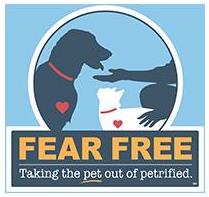
May 2015 – Canine Influenza Update – What you need to know
Canine influenza, also referred to as dog flu, is a highly contagious infection that is caused by an influenza A virus. The strains of dog flu have been classified as H3N8 and H3N2 based on the amino acid composition. The H3N2 canine influenza strain appeared limited to China, Korea and Thailand until recently when an outbreak started in Chicago.
The outbreak made the headlines due to the highly contagious nature of the dog flu, and the fact that dog owners and veterinarians were caught off-guard. It was reported that by mid-April, the Cook County Department of Animal and Rabies Control had officially tallied six deaths and more than 1,000 cases of the canine infectious respiratory disease in the Chicago area.
Is your dog at risk?
Outbreaks of canine flu are more commonly seen in situations where groups of susceptible dogs are in close contact, such as shelters, kennels, dog day care facilities, and boarding facilities.

Canine influenza is spread by aerosolized respiratory secretions and contaminated objects (kennel surfaces, food and water bowls, collars and leashes) and people moving between infected and uninfected dogs. The virus can remain alive and able to infect on surfaces for up to 48 hours, on clothing for 24 hours, and on hands for 12 hours.
However, the canine influenza virus appears to be easily killed by disinfectants that are commonly used in animal care facilities such as quaternary ammonium compounds (benzalkoniumchloride), aldehydes, phenols and bleach solutions. At Belle Mead Animal Hospital, for example, we have protocols in place for thoroughly cleaning and disinfecting pet cages, bowls and other surfaces between uses.
What about vaccination?
There is a vaccine available for the original strain H3N8. It is 93 % effective for that specific strain. However, this vaccine is considered a “lifestyle” vaccine, and is not recommended for every dog. In general, the vaccine is intended for the protection of dogs at risk for exposure to the canine influenza virus, which include those that either participate in activities with many other dogs or are housed in communal facilities, particularly where the virus is prevalent. It takes 2-4 weeks to protect the dogs, so it is advised to vaccinate 2-4 weeks before public exposure, if possible.

Dogs that may benefit from canine influenza vaccination include those that receive the kennel cough (Bordetella/parainfluenza) vaccine, because the risk groups are similar. Dog owners should consult with their veterinarian to determine whether their dog’s lifestyle includes risks for exposure to the canine influenza virus and if vaccination is appropriate for their dog.
The canine H3N8 vaccine is intended as an aid in the control of disease associated with canine influenza virus infection. Although the vaccine may not prevent H3N8 infection entirely, efficacy trials have shown that it may significantly reduce the severity and duration of clinical illness, including the incidence and severity of damage to the lungs. In addition, the vaccine reduces the amount of virus shed and shortens the shedding interval. Therefore, vaccinated dogs that become infected develop less severe illness and are less likely to spread the virus to other dogs. These benefits are similar to those provided by influenza vaccines used in other species, including humans.
The AVMA reports that this new strain of canine influenza H3N2 that appeared in Chicago is still considered an emerging pathogen, and all dogs, regardless of breed or age, are susceptible to infection and have no naturally acquired or vaccine-induced immunity when first exposed to the virus.
If this latest virus strain H3N2 virus enters a kennel or other closed group, a high percentage of the dogs may become infected, as was the case in Chicago, and most of these dogs will be symptomatic. Although most dogs have a milder form of canine influenza and recover without complications, some may develop severe pneumonia. Approximately 20-25% of infected dogs are expected to remain asymptomatic, but can still shed the virus and spread the virus.
If you notice signs of illness, contact your veterinarian.
Canine influenza cannot be diagnosed only by clinical signs because the coughing, sneezing and nasal discharge symptoms are similar to those associated with all of the other respiratory pathogens and cannot be differentiated from them.
Antibodies to canine influenza virus may be detected in the blood as early as 7 days after onset of clinical signs, and the virus may be identified in nasal or pharyngeal swabs during the first 4 days of illness. The most reliable and sensitive method for confirmation of infection is serologic testing. Paired acute serum samples (taken within the first 7 days of illness) and convalescent serum samples (taken 10-14 days later) are necessary for diagnosis of recent infection.
Veterinary expertise is required to establish the best course of treatment or treatment options for canine influenza. As for all viral diseases, treatment is largely supportive. Pet parents are advised that good husbandry and nutrition may help their dogs in mounting an effective immune response to the virus. Most dogs recover from canine influenza within 2-3 weeks. The presence of secondary bacterial infection, pneumonia, dehydration, or other health factors (e.g., pregnancy, pre-existing pulmonary disease, immunosuppression, tracheal collapse, etc.) may warrant additional diagnostic and treatments.
Reference source: AVMA site
Belle Mead Animal Hospital, Your Other Family Doctors
LIKE us on Facebook, Follow us on Twitter @BMAH121 and Join our Circle at Google+ for news and pet wellness tips.










